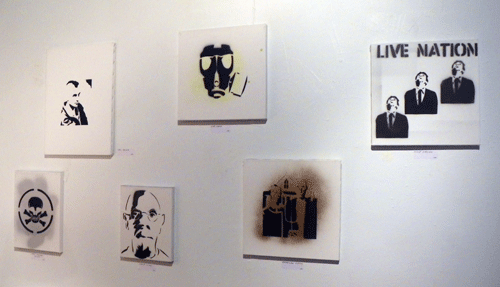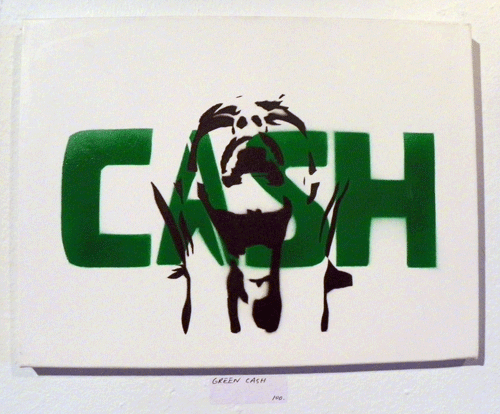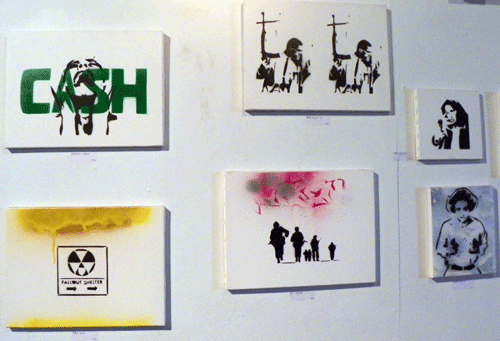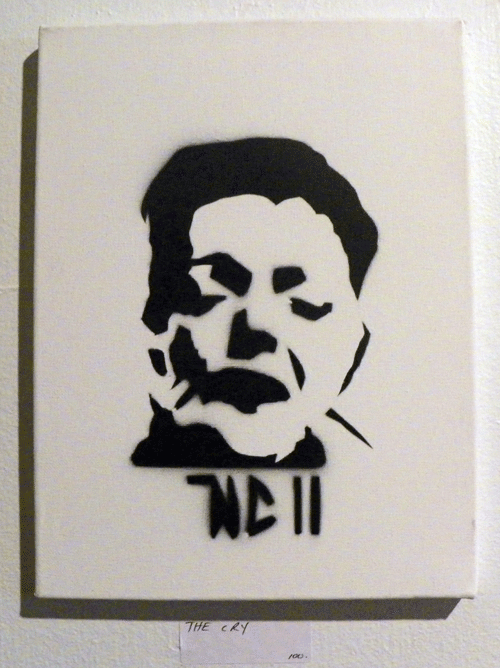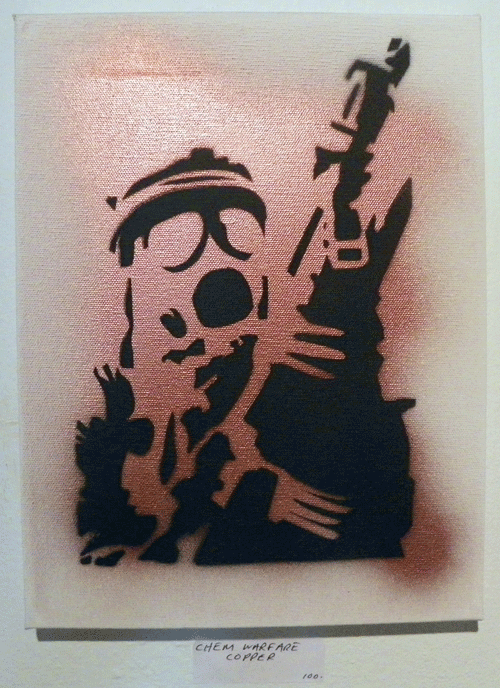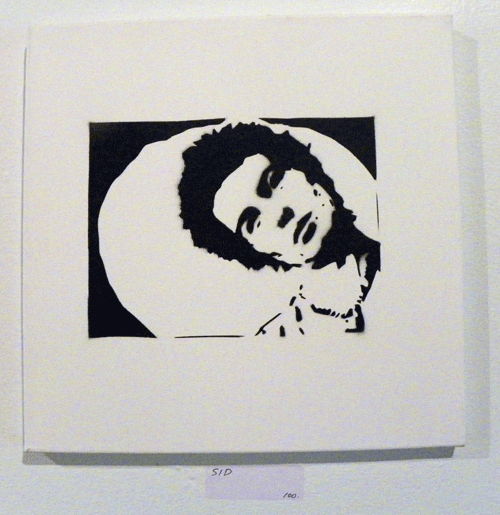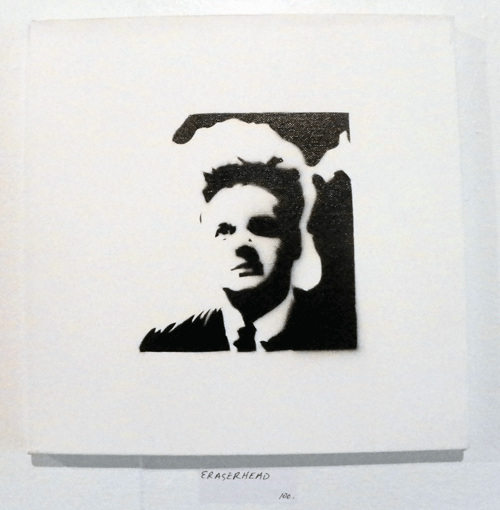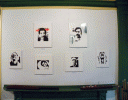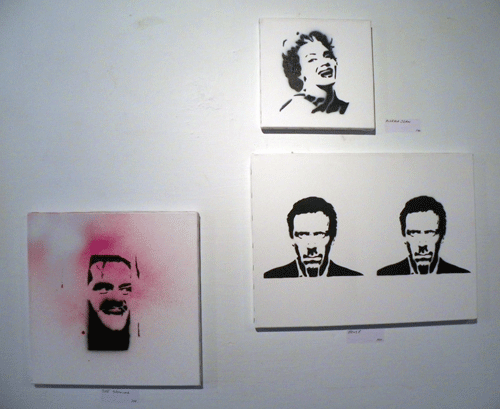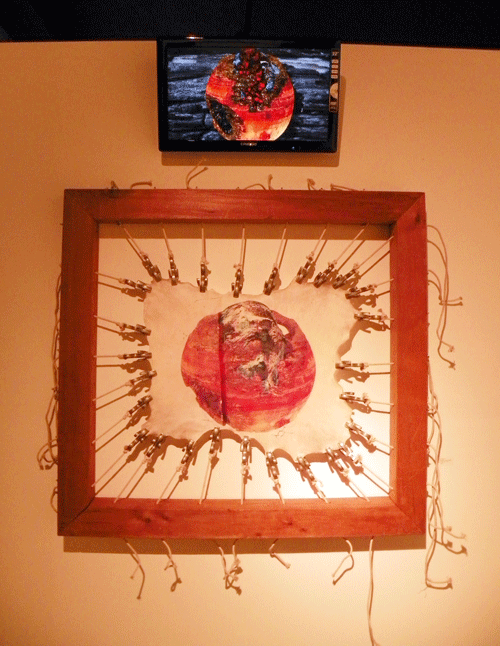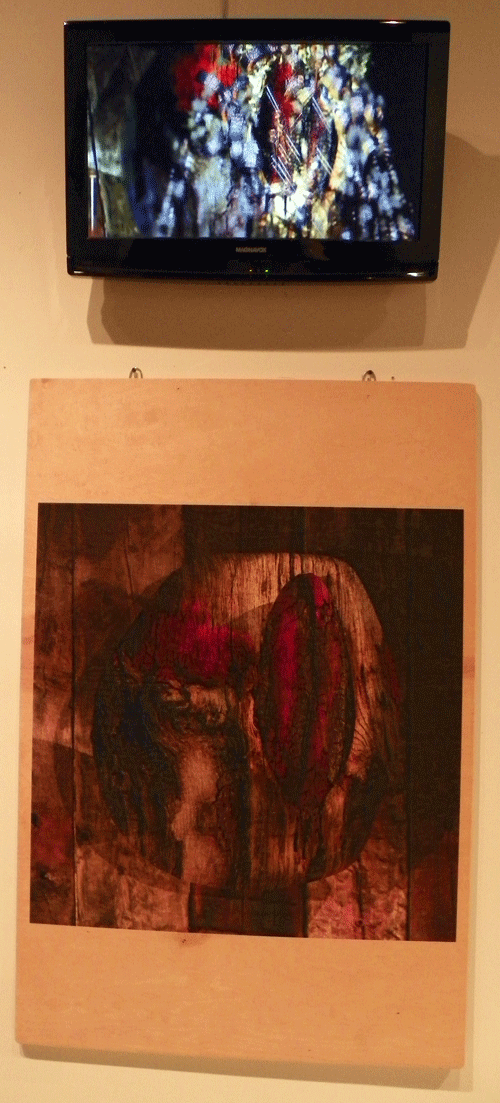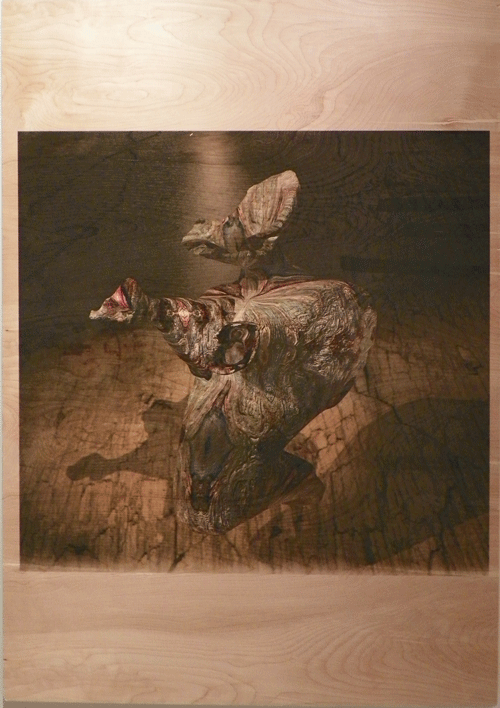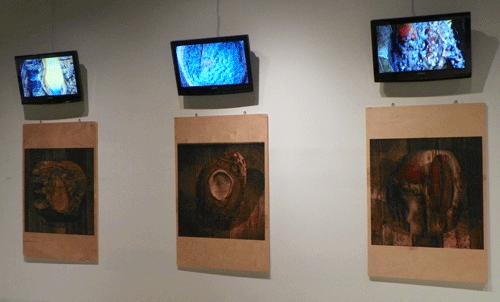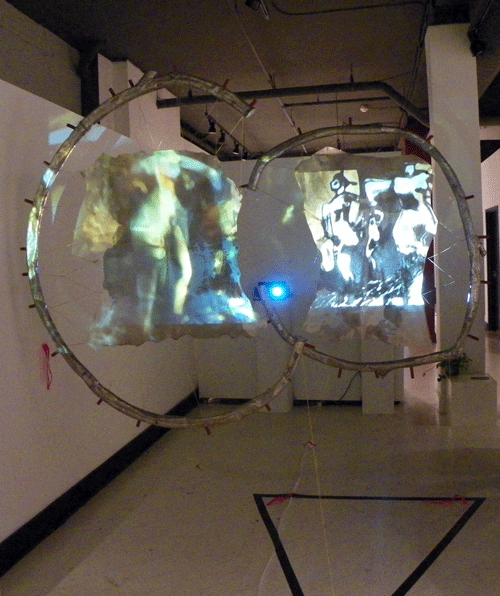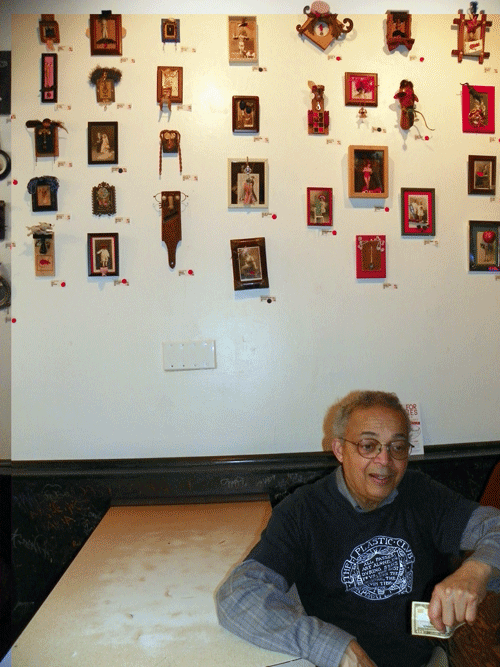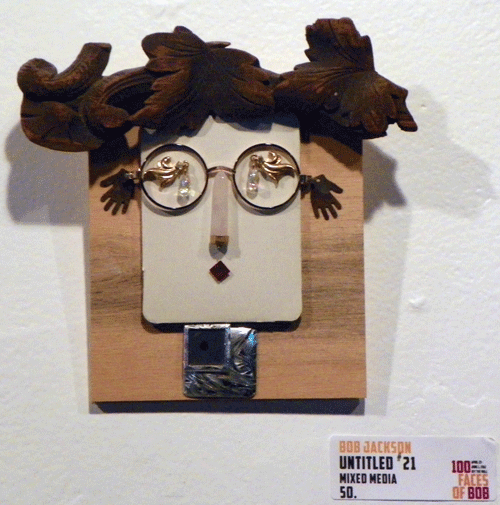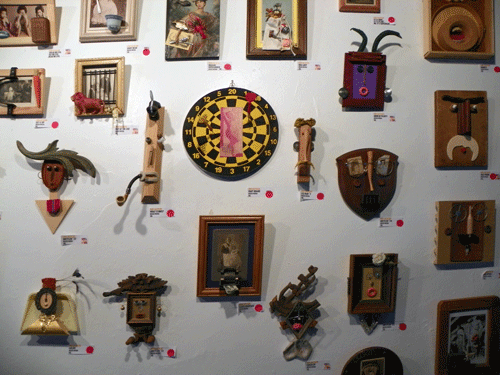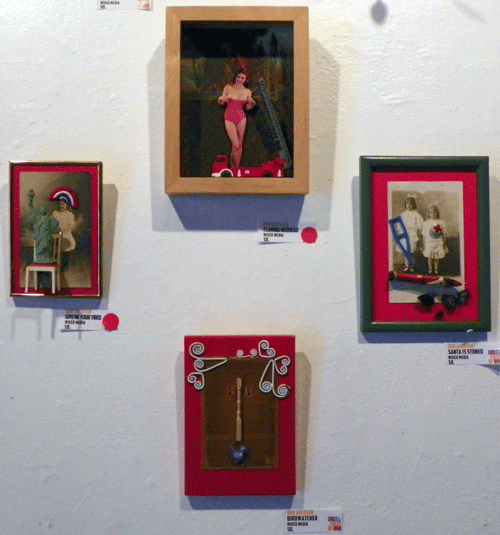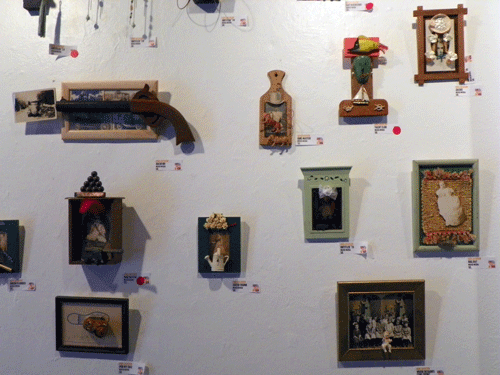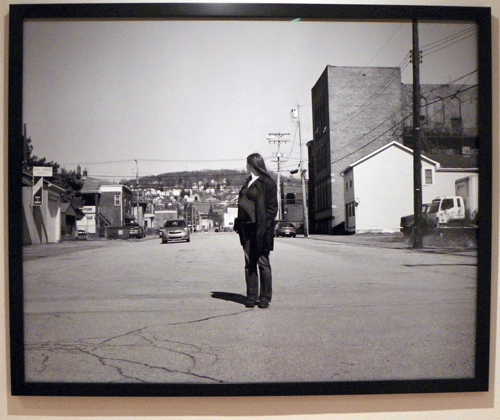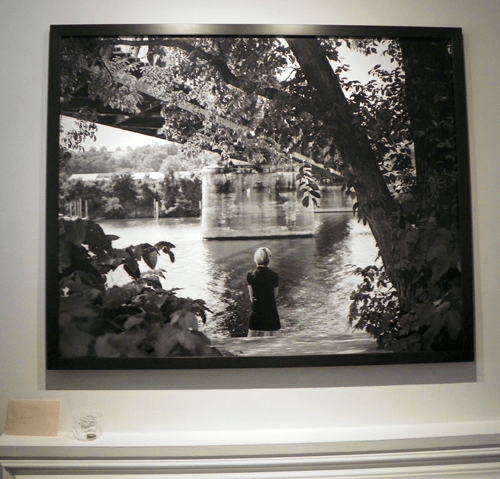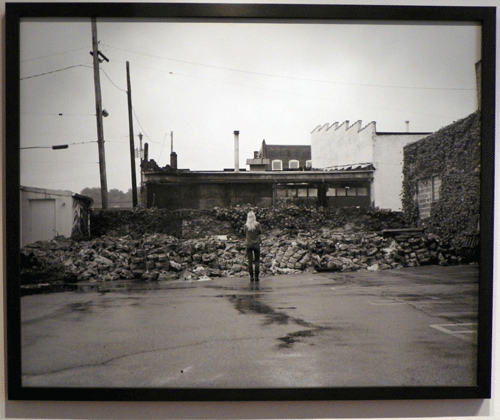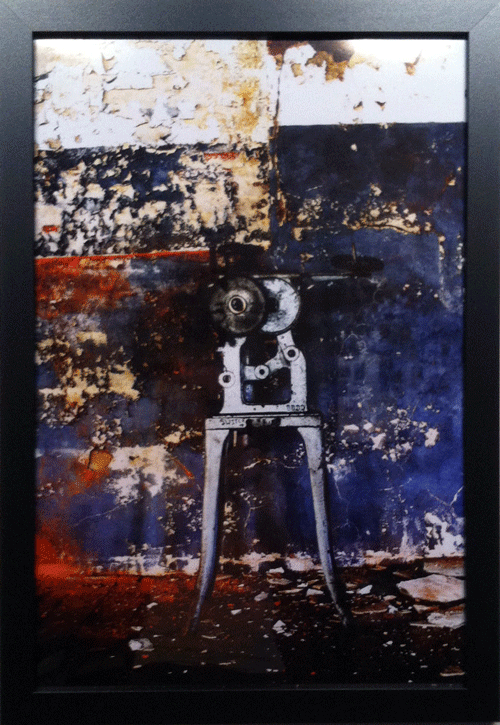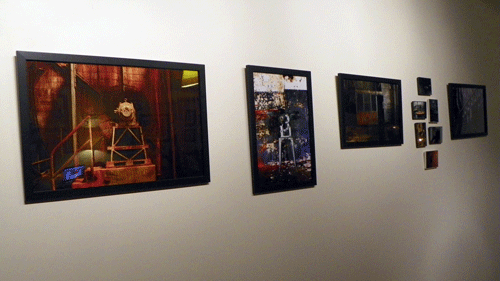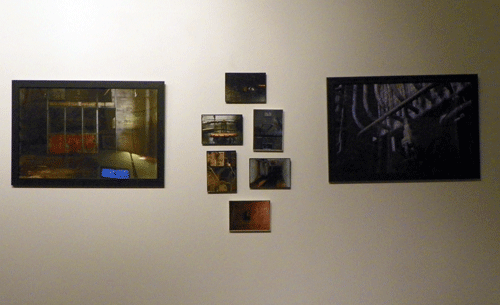Kojak, Fresh Paint, Anthony C and Karen M in The Philadelphia Sketch Club‘s Stewart Room Gallery
The member show in the Stewart Room Gallery of The Philadelphia Sketch Club is a coveted spot to exhibit solo art shows. The art team Anthony C and Karen M, long time active members of America’s oldest artist run art club are the featured artists for July and are breaking new ground artistically in the historic space because the show is team artwork and street based in style. Street art is a big part of Karen M and Anthony C’s art platform including free art, mail art, stickers and graffiti. Karen M talked about the content of the expansive show while we walked around the grand pool table. “This is a body of work that is about two years in the making. Along with our other projects. We always seem to be doing iconic images and popular culture, we reference things we like and things we think are important. And things that have messages.” said Karen M.
Fresh Paint, Anthony C and Karen M in The Philadelphia Sketch Club‘s Stewart Room Gallery
 Fresh Paint, Anthony C and Karen M in The Philadelphia Sketch Club‘s Stewart Room Gallery
Fresh Paint, Anthony C and Karen M in The Philadelphia Sketch Club‘s Stewart Room Gallery
“Each piece is cut with an X-ACTO, sprayed onto canvas, each piece is unique because you can’t spray it the same every time.” Some of the pieces are familiar from other exhibitions, I wondered how much work was recent? The Mona Lisa is especially memorable.”Only one or two were in other shows. This is new. We always work. We always have projects going and then when an opportunity come up for a show, we’ll go to our inventory and pick what we think would be appropriate. Now, with the Stewart Room, we know with The Philadelphia Sketch Club, it’s very traditional, a lot of people from PAFA and we wanted to do something that no one has ever seen.”
Green Cash, Fresh Paint, Anthony C and Karen M in The Philadelphia Sketch Club‘s Stewart Room Gallery
“So, we have fifty-one pieces here and we did the installation so that you come in and it’s all fresh paint. There might be criticism from hardened graffiti writers who say you’re selling out when your putting it on canvas. But, as I was talking to a Miami based graffiti writer, graffiti is evolving, and we have the stencil so there is no problem if we want to spray it somewhere else. If you know what I mean?” Playing dumb, like what? Karen M said, “Sidewalks, we don’t vandalize, we don’t spray on personal property but if something’s dilapidated or boarded up, that’s fair game.” That’s what graffiti is. But Anthony C and Karen M approach the style as a way of communicating with an audience of their peers and collectors who gather their work from the street or buy it in a gallery. Karen M says, “Modern graffiti started in Philadelphia and then spread to New York. It started with Cornbread. Who we had the pleasure of meeting him a couple of years ago when the documentary about him debuted. And he said he was just in a detention center and always broke the balls of the cook because we wanted cornbread and they didn’t have it. So the name stuck. When he got out, he liked this girl, so he wanted to get her to notice him, so he looked at the transit route that she rode and he wrote his name at every stop.”
Fresh Paint, Anthony C and Karen M in The Philadelphia Sketch Club‘s Stewart Room Gallery
“So he just wrote, Cornbread and then eventually Chewy joined him and the birthplace of graffiti is Philadelphia and then it moved up into New York and it evolved and they did the trains, and people went all city. And then it went from just tagging to bombing and pieces. And now graffiti has evolved so much that there’s even graffiti classes, there’s legal walls, maybe some companies would want to hire a graffiti writer to advertise on the side of their store.” Another local graffiti artist NoseGo just did a building on 5th Street near South. “We know him from a gallery called Rare Breed that was one of the first graffiti galleries in back in the day. It was on 15th Street. A lot of writers gathered there, a lot of them knew each other from there, he sold paint, he sold markers, he sold videos, books…and it was a really good gathering ground for people that were doing work.”
The Cry, Fresh Paint, Anthony C and Karen M in The Philadelphia Sketch Club‘s Stewart Room Gallery
Fresh Paint, Anthony C and Karen M in The Philadelphia Sketch Club‘s Stewart Room Gallery
The array of pop icons, cultural figures and persistent images presents the question of how to decide what to paint? Karen M said, “It’s intuitive. We’re influenced by punk rock, hip hop, Andy Warhol, Blek LaRat from Paris, the Godfather of street art, he’s done wheat pastes and stencils, he’s just wonderful. He saw all the rats of the city of Paris, so he started to stencils of them and we think he’s just wonderful, the Godfather of street art. Gotta give props to Blek and Cornbread.”
Chem Warfare Copper, Fresh Paint, Anthony C and Karen M in The Philadelphia Sketch Club‘s Stewart Room Gallery
The absence of color is obvious with crisp white canvasses each offering a unique stencil and maybe a spurt of spray paint. “If you do a stencil on a wall or tag, it is usually just the flat black Rust-Oleum Flat Black is the pinnacle of graffiti paint. Now, they’ve got all kinds of crazy colors, there’s paint coming from Spain, all over the world, but, the true graffiti writers use the flat black Rustoleum. So we stay in that tradition.”
Sid, Fresh Paint, Anthony C and Karen M in The Philadelphia Sketch Club‘s Stewart Room Gallery
The exhibit is arranged thematically with pop icons, famous images and characters grouped loosely. “It’s a juxtaposition, we wanted people to say you really didn’t have the balls to do the Mona Lisa, did you? Yes, we drew the Mona Lisa and John Lennon, iconic for our time. On this wall we have Redd Foxx and on the opposite wall we have Malcolm X. And they were together when they were hoodlums and they both made such an impact on our culture: Redd Foxx eventually becoming iconic, comedian, television character and Malcolm X the leader of the Nation of Islam. And, we love to juxtapose images, we don’t do it with any rhyme or reason going back to when they put together the words hydrogen jukebox. We just juxtapose base on our intuition and design of the piece. So, the show was hung rather quickly and without too much…thinking about definite placement, we did it intuitively.” One grouping of characters appears to be all sociopaths. “We’re drawn to the darker side, we’re drawn to the sociopaths and the crazies, we like that. In pop culture and our friends.”
Eraserhead, Fresh Paint, Anthony C and Karen M in The Philadelphia Sketch Club‘s Stewart Room Gallery
Fresh Paint, Anthony C and Karen M in The Philadelphia Sketch Club‘s Stewart Room Gallery
Karen M says, “We push the envelop. And we want to be known, well, we’re basically political artists. As any graffiti artist, when they put their name on the wall, that’s a political statement. I got interested in graffiti in the late seventies and the earlt eighties when I went to Mexico and there was the conflict in El Salvador. And every wall that had a space, had political graffiti about getting America out of El Salvador and to me that just sparks in me a love for the art which I carry to this day.”
“David Lynch is a big influence. When I was at Philadelphia College of Art we had a great film teacher, Dr. Ruth Pearlmutter, and showed us Eraserhead and I believe it was when it was first released and I just wrote pages and pages on the film. Anthony and I, my collaborator, are big fans of David Lynch. You can even see some of the influence on our YouTube channel and just the image of Henry with his hair all backlit looking all crazy just made a perfect stencil.”
Fresh Paint, Anthony C and Karen M in The Philadelphia Sketch Club‘s Stewart Room Gallery
Fresh Paint, Anthony C and Karen M in The Philadelphia Sketch Club‘s Stewart Room Gallery
Read more about Anthony C and Karen M at SideArts.com Philadelphia Art Blog. New SideArts.com post here.
Anthony C and Karen M on SideArts.com
Anthony C and Karen M YouTube channel
Anthony C and Karen M on MySpace
Follow Anthony C and Karen M on Twitter @anthonygraffart
Through SideArts.com, DoN is offering online and in-person one-on-one consulting services to visual and craft artists and art businesses. Read all about it here.
Written and Photographed by DoN Brewer
Follow DoN on Twitter @DoNNieBeat58
Affiliate Marketing [disclosure page] Shop on-line at Amazon.com and help support DoNArTNeWs.


